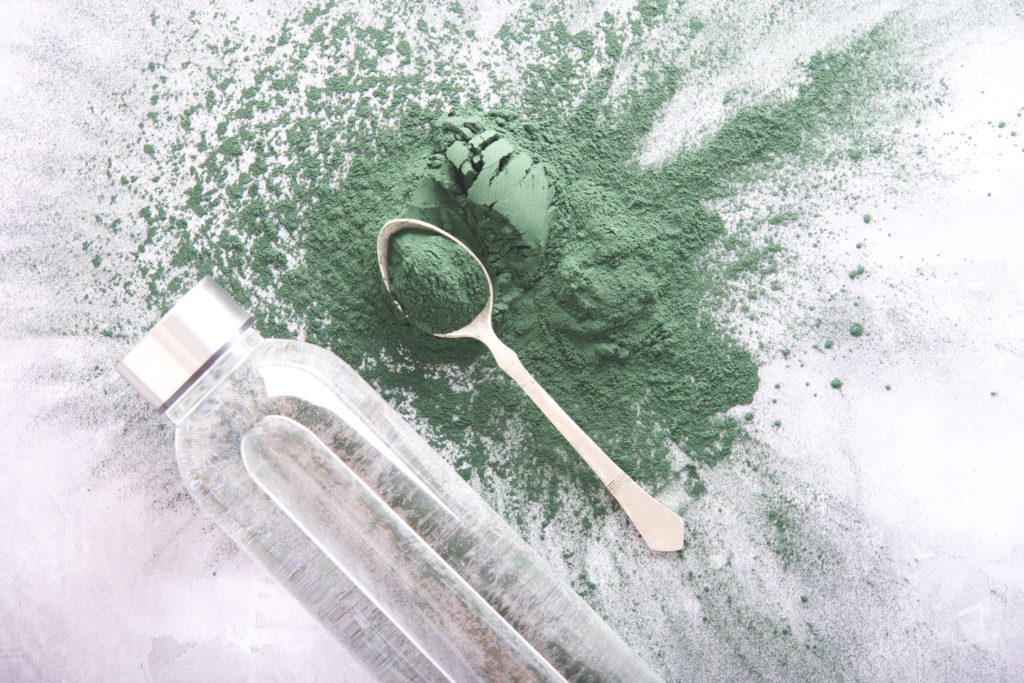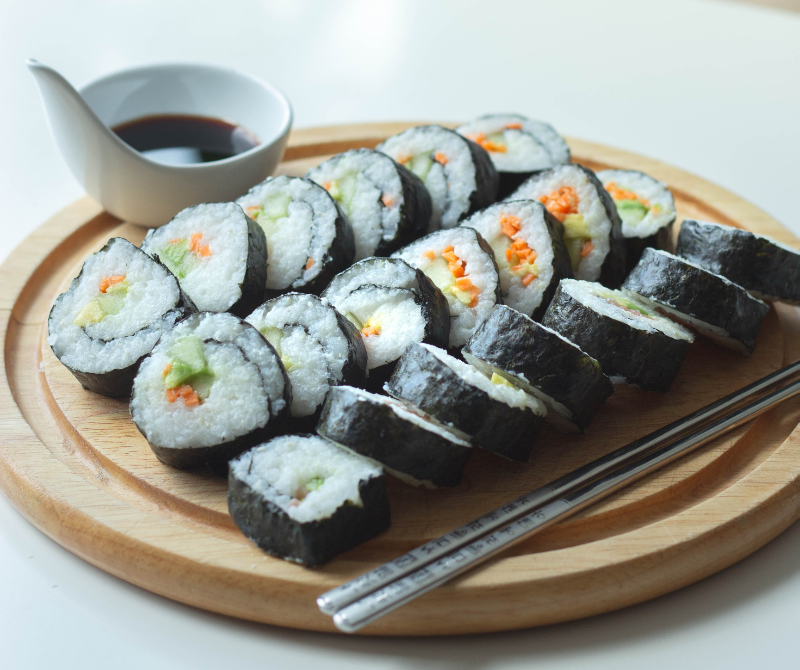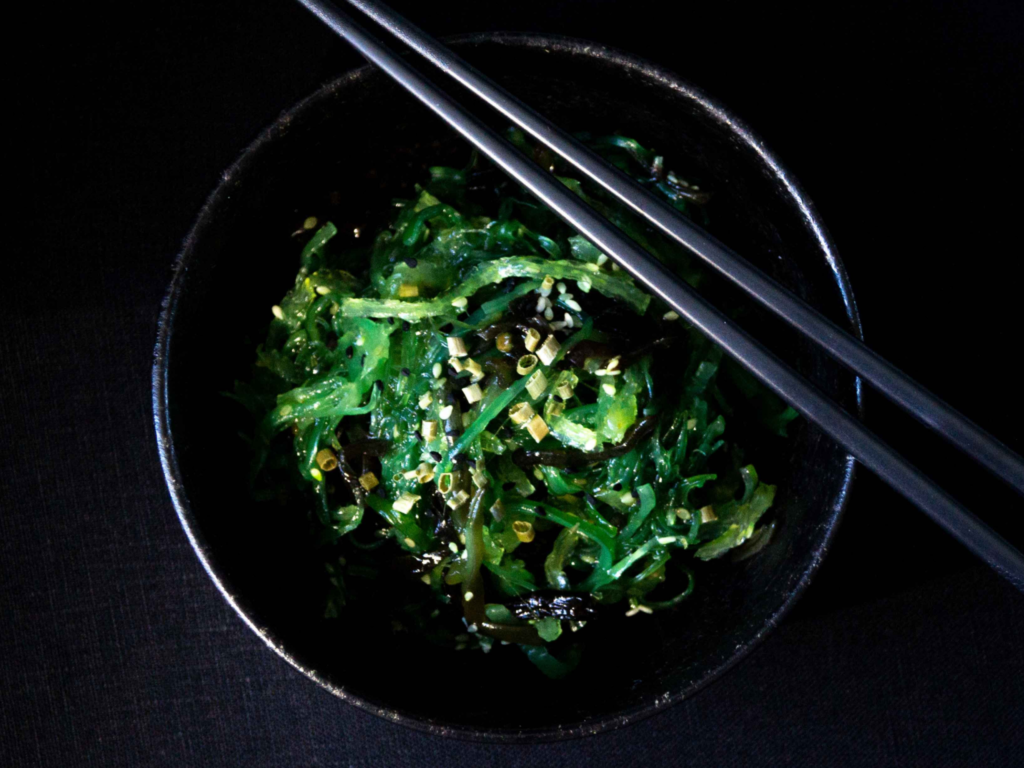Are you fed up of eating healthy, leafy greens like kale, spinach and green herbs? Then it is perhaps time for you to explore other options, like edible and healthy greens from the oceans!
Seaweed is an excellent food that is low in calories but abundant in calcium, magnesium, iron, and folate. It has been an integral part of Asian cuisines for ages and is eaten every day by the people of South Asia. Although there is a wide variety of seaweed, not all of them are edible. Of the different edible varieties, spirulina, nori, and wakame are most popular. Let us learn more about these three varieties and how to use them.

Spirulina
Spirulina is a blue-green, microalgae with high protein and vitamin content. It is characterized by its long spiral shape.
Interestingly, spirulina was consumed as early as during the Aztec reign in the 15th century. Although it is used in various cuisines, it is most common in Asian cooking.
Spirulina is a rich source of calcium, magnesium, phosphorus, potassium and Vitamin C. Although the taste may seem unusual at first, it doesn’t take too long to get used to.
Spirulina presents a host of health benefits including the following:
Weight loss: Scientific studies suggest that the intake of spirulina for a period of 3 weeks produced significant improvement in BMI in overweight people. This is because spirulina is low in calories while being rich in nutrients. This type of seaweed also boosts metabolism levels. So, it can make you feel more energetic and capable of engaging in intense activities.
Control diabetes conditions: Studies suggest that spirulina can help to control high blood sugar conditions in Type 2 diabetes patients. It has powerful antioxidant effects that help to manage type 1 diabetes.
Lowers cholesterol: Spirulina can lower total and bad cholesterol or LDL in the body. Meanwhile, it increases HDL or good cholesterol. Hence it is highly suitable for keep cholesterol levels under check and improving general cardiac health.
Reduces blood pressure: Just like it helps with weight loss, research suggests that continuous use of spirulina for at least three months can reduce blood pressure, even in overweight people.
How to Use Spirulina
Spirulina is available in raw as well as powdered form and as capsules and tablets. So, you can use it in all types of recipes. Try adding some spirulina powder into your salad dressing. Or sprinkle it on fresh guacamole for added umami flavors. You can even use it in ice cream.
You can also add spirulina into smoothies and nut yogurts to boost your nutritional intake with minimal effort. Or if you are really feeling adventurous, add it to pesto or lemonade.

Nori (Roasted Seaweed)
If you have tried Japanese dishes like Sushi and Onigiri, you may have noticed their thin paper-like green wrapping. This is Nori.
Nori is a type of edible Japanese seaweed that looks like paper. It has a deep purple color when harvested. Fresh nori is roasted and pressed into sheets. During this process, nori turns dark green.
Nori has been used in cooking for centuries. However, the sheet form became popular only in 1750. Before this time, Nori was used as a paste in Japanese cooking. Today, most of the nori we find in grocery stores are farm-raised.
Nori contains copper, iron, zinc, manganese and other micro-nutrients.
How to use Nori
Nori sheets must be stored away from sunlight and moisture to retain the original scent and flavor. You can add finely cut or crumbled nori to rice or ramen. You can also use this flavor bomb as a topping for popcorn. If you like its distinct umami flavor, you can even use it in salad dressings with sesame oil and rice vinegar.
Apart from the standard variety of nori, you may sometimes come across blue-colored Aonori. Powdered Aonori is usually sprinkled on rice and noodle dishes or added to soups and stews. Flavored nori called Ajitsuke nori is another variety that contains seasonings like pepper and sesame. You can eat this as a snack.

Wakame
Wakame, also known as sea mustard, is another form of edible seaweed. It is dark green with a silky texture and natural sweetness. Due to its strong flavors, wakame is a common ingredient in Japanese soup recipes.
Wakame has been used in Oriental medicine for ages as a blood-purifying agent and to treat intestinal health conditions and improve skin and hair conditions. Since it is a rich source of calcium and iodine, it is recommended for lactating mothers to enhance their nutritional reserves. Wakame is rich in Omega-3 fatty acids. Studies suggest that wakame contains a compound called fucoxanthin that can burn fatty tissue.
How to use wakame
Wakame can be added to soups and salads. Unlike nori and spirulina, it is not just a flavoring agent. Instead, it is a key ingredient in various recipes. Thin wakame noodles can be used in seaweed salads. Store-brought wakame will have to be rehydrated and the excess water squeezed out before use. Once hydrated, wakame can be mixed with other ingredients to make flavorful, nutritious vegan salads. You can also use wakame in smoothies to derive the health benefits of this ingredient.
To wrap it up….
Seaweed is a superfood that brings the richest nutrients of marine eco-systems to our plates. They are full of flavor and suitable for a variety of dishes. Packed with minerals, antioxidants, and healthy nutrients, they can boost your nutritional intake and provide health and beauty benefits. And the best part is that seaweed is vegan-friendly.
Introduce edible seaweed like spirulina, nori, and wakame into your daily diet through easy and simple recipes. Not only will the distinct umami flavors tantalize your taste-buds, but you will also benefit from the immense health benefits they provide.
Did you enjoy reading this article? Please tag me on Instagram @cookingmypoundsoff. I would LOVE to hear from you!!! Truly yours, Elena!
The content of this article should not be considered a substitute for professional medical expertise or treatment. This website is not intended to be a substitute for the advice of a physician, certified dietitian or other licensed professional. Always consult with your primary care provider before starting a new diet or introducing new foods.





